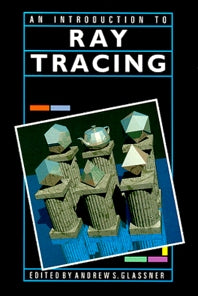Freshly Printed - allow 10 days lead
Couldn't load pickup availability
An Introduction to Ray Tracing
Andrew S. Glassner (Edited by)
9780122861604, Elsevier Science
Hardback, published 1 June 1989
368 pages
22.9 x 15.2 x 2.5 cm, 0.66 kg
"Glassner's excellent book is indispensable for anyone wishing to understand and implement the up-to-date methods of ray tracing (and in the process, learn about surface physics too)...It is well edited and avoids any of the repetitions or contradictions that might have arisen in a multi-author text. Covering both theory and practicalities it includes sufficient detail (and code) to allow competent programmers to set up their own ray tracing systems...To me it seems to be an exemplary text and I highly recommend it." --John Lansdown, THE COMPUTER BULLETIN
"Excellent reference for ray tracing for both the beginner and the experienced ray tracer. It is the only book we know of completely dedicated to ray tracing." --IMAGING & VISION COMPUTING
The creation of ever more realistic 3-D images is central to the development of computer graphics. The ray tracing technique has become one of the most popular and powerful means by which photo-realistic images can now be created. The simplicity, elegance and ease of implementation makes ray tracing an essential part of understanding and exploiting state-of-the-art computer graphics.
An Introduction to Ray Tracing develops from fundamental principles to advanced applications, providing "how-to" procedures as well as a detailed understanding of the scientific foundations of ray tracing. It is also richly illustrated with four-color and black-and-white plates. This is a book which will be welcomed by all concerned with modern computer graphics, image processing, and computer-aided design.
Coming soon.
Subject Areas: Image processing [UYT], Computer vision [UYQV], Graphics programming [UML]


